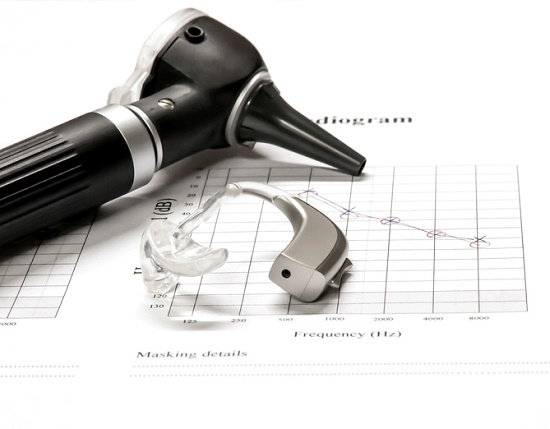
Are you contemplating purchasing hearing aids?
If so, it can seem intimidating at first. There are numerous choices available, and the obscure terminology doesn’t help.
That’s why we’re going to summarize the most common and important terms, so when you work with your hearing professional you’ll be prepared to pick out the best hearing aid for you.
Hearing loss and testing
High-frequency hearing loss – this is the most prevalent type of hearing loss. Patients with high-frequency hearing loss have the most difficulties hearing higher frequency sounds, including the sounds of speech.
Sensorineural hearing loss – this type of hearing loss develops when there is injury to the nerve cells of the inner ear. This is the most prevalent form of permanent hearing loss caused by exposure to loud noise, aging, genetics, or other medical conditions.
Bilateral hearing loss – hearing loss in both ears, which may be symmetrical (the same degree of loss in both ears) or asymmetrical (varied levels of loss in each ear). Bilateral hearing loss is as a rule best treated with two hearing aids.
Audiogram – the chart that provides a visual description of your hearing assessment results. The vertical axis measures decibels (volume) and the horizontal axis measures frequencies (pitch). The hearing consultant records the lowest decibel level you are able to hear at each frequency. If you need higher volumes to hear higher frequencies, your audiogram will show a sequence of high-frequency hearing loss.
Decibel (dB) – the unit utilized to measure sound level or strength. Regular conversation registers at about 60 decibels, and sustained direct exposure to any sound over 80 decibels could cause permanent hearing loss. And since the scale is logarithmic, an increase of 6-10 decibels doubles the volume of the sound.
Frequency – represents pitch as measured in hertz. Imagine moving up the keys on a piano, from left to right (low-frequency/pitch to high-frequency/pitch).
Threshold of hearing – The lowest decibel level that can be heard at each individual frequency.
Degree of hearing loss – Hearing loss is generally labeled as mild (26-40 dB loss), moderate (41-55), severe (71-90), or profound (91+).
Tinnitus – a prolonged ringing or buzzing in the ears when no external sound is present. Normally a signal of hearing injury or loss.
Hearing aid styles
Digital hearing aid – hearing aids that incorporate a digital microchip, utilized to custom-program the hearing aids to complement each individual’s unique hearing loss.
Hearing aid style – the type of hearing aid defined by its size and position in relation to the ear. Main styles consist of behind-the-ear, in-the-ear, and in-the-canal.
Behind the ear (BTE) hearing aids – the majority of hearing aid parts are contained within a case that fits behind the ear, attached to an earmold by a clear plastic tube. Mini-BTE hearing aids are also available.
In the ear (ITE) hearing aids – the hearing aid components are contained within a case that fits in the outside part of the ear.
In the canal (ITC) hearing aids – the hearing aid parts are enclosed in a case that fits inside of the ear canal. Completely-in-the-canal (CIC) hearing aids are also available that are virtually invisible when worn.
Hearing aid parts
Earmold – a piece of plastic, acrylic, or other soft material that is formed to the curves of the patient’s ears, utilized for the fitting of hearing aids.
Microphone – the hearing aid part that picks up sound in the environment and converts the sound waves into an electrical signal.
Digital signal processor – a special microprocessor within the hearing aid that can adjust and enhance sound.
Amplifier – the component of the hearing aid that increases the volume of sound.
Speaker – the hearing aid part that supplies the magnified sound to the ear.
Wireless antenna – available in select hearing aids, allowing for wireless connectivity to compatible devices such as phones and music players.
Hearing aid advanced features
Variable programming – hearing aid programming that allows the individual to adjust sound settings according to the environment (e.g. at home versus in a congested restaurant).
Directional microphones – microphones that can focus on sound originating from a specified location while reducing background noise.
Telecoils – a coil located inside of the hearing aid that allows it to hook up to wireless signals originating from telephones, assistive listening devices, and hearing loops installed in public venues.
Noise reduction – functionality that helps the hearing aid to distinguish speech sounds from background noise, which results in the enhancement of speech and the inhibition of distracting noise.
Bluetooth technology – permits the hearing aid to communicate wirelessly with a number of devices, including mobile devices, computers, audio players, and other compatible devices.
Not sure which features you need, or which you could live without? Let us help you find the best hearing aid for your unique needs. Give us a call today!